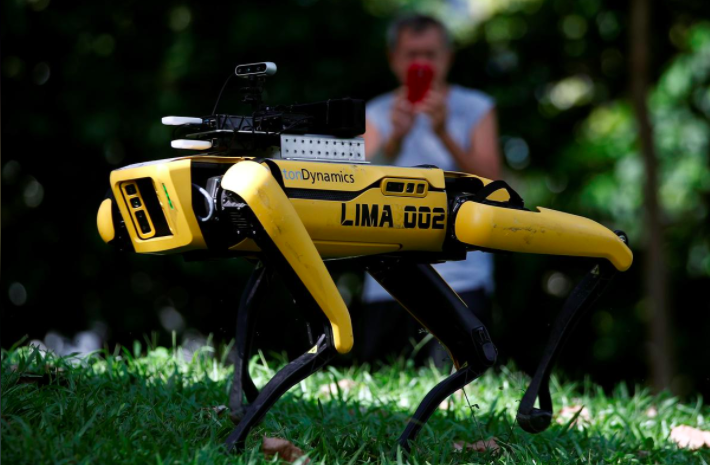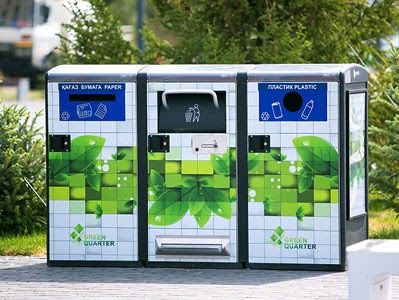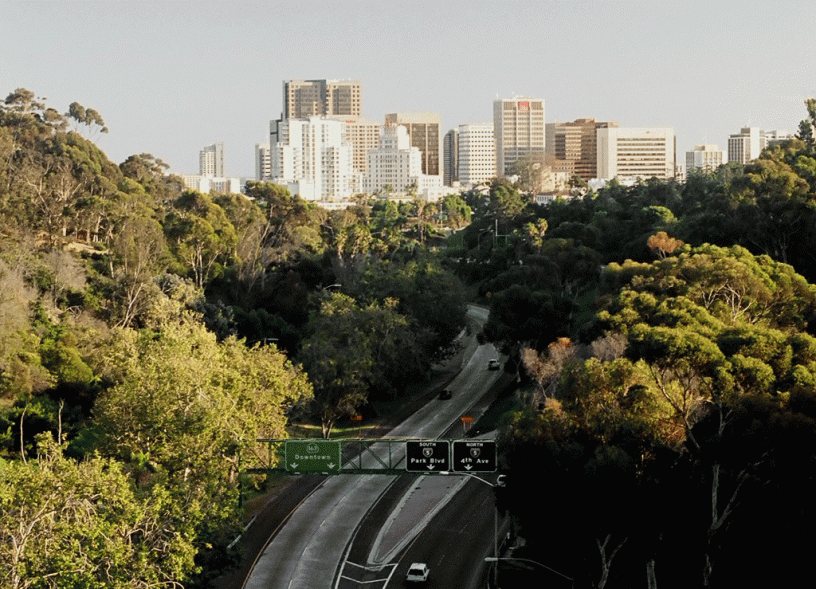
Medicine
The need for high-quality and at the same time flexible medicine (that is, capable of rapidly increasing resources, changing the formats of interaction with people) has now become the main one, and we very much hope that in the coming years, the attention of politicians and investors to the problems and tasks of this industry will increase.
On the one hand, the compelled need to reduce contacts with doctors (as well as with any people), and on the other hand, the shortage of health workers (all efforts are made to save from COVID), will accelerate the growth of wearable electronics - from simple fitness bracelets that measure heart rate to medical devices that generate data vital to patients. All these gadgets increase the amount of data that medical systems already generate by hundreds of times. At the same time, it is important for people that the entire array of data on their health be available at any medical institution upon request and not depend on a specific branch or organization. So, the requirements for safe data transfer are also growing (in Russia, for example, the confidentiality of medical records is prescribed in Law No. 323 of the Federal Law “On the Basics of Protecting the Health of Citizens in the Russian Federation”).
Dubai is one of the most successful examples of integrated networks for medical communications, including the use of sensors that monitor health. This is what makes the emirate one of the centers of medical tourism in the world where people come not only to five-star hotels, but also to “five-star hospitals”. If not for the coronavirus and closed borders, by 2021 the tourist flow in Dubai could grow to 1.3 million such tourists a year. And the annual increase in income from medical tourism was planned at 13% over the next five years.

The electronic health record (EHR) is considered a key element of the smart medicine concept. This approach, which implies the storage of all medical data from the moment the patient is born, is already used in 94% of US hospitals; a centralized system of medical records should work in the European Union as well. Perhaps these plans were slightly pushed back by the ill-fated virus. In the meantime, you can rejoice with the residents of Tallinn and all of Estonia - for the third year already, information about their health has been entered into electronic cards, the safety of the data and the inability to replace them is guaranteed by the blockchain platform.
Moscow is developing its own platform - the Unified Medical Information and Analytical System, UMIAS. In the capital, all state polyclinics are already connected to it, and before the pandemic it dealt with the problem of access to a therapist and doctors of narrow specialization. But the virus has confused all the cards, and, perhaps, the Moscow Department of Health should think about introducing and connecting to it remote services - online consultations of doctors, courier delivery of kits for various medical procedures.
In principle, all these technologies are already in use: one of the largest private networks of clinics, Medsi, reports a twofold increase in requests for video consultations. Doctors working in the state healthcare system are also not lagging behind: in the telemedicine center of the capital's health department, in March alone (the first month of self-isolation), they conducted about 12,000 remote consultations of patients with a mild form of coronavirus. Obviously, telemedicine is the future, and even supporters of face-to-face consultations will not be able to argue, because during peak viral loads, there are practically no alternatives: hospitals and clinics accept only people with acute and severe illness.
As for home-based analyzes, foreign companies intercept the baton here. British Thrivaoffers kits for home blood sampling. True, the company does not offer how to technologically transport the material to the laboratory (either a courier or postal services are at the patient’s choice). Meanwhile, the Americans are testing and improving the delivery of analyzes using drones. It is assumed that the quadrocopters will run between medical facilities located at a distance of up to 20 kilometers, and transport containers with a cargo weighing up to 2 kg. This is how it should look, according to the developer company Matternet.
New sanitary standards: distance, personal hygiene and contactless technology
The experience of living in self-isolation, obviously, will make in demand for a long time solutions that help to interact contactlessly with the outside world, maintain a sanitary distance from random neighbors and comply with strict hygiene requirements. Doors that open by a motion sensor or using face recognition technology; cameras with a thermal imager that determine a person's temperature with an accuracy of 0.3 degrees; Video analytic systems, mandatory for offices and enterprises, that track whether staff wash their hands.
There is already a demand in the USAon software solutions based on artificial intelligence, which allow existing video surveillance systems to record people's violation of social distance and the absence of masks. Store owners are implementing new software for fear of fines and closure of retail outlets by regulatory authorities. The purchase and use of such solutions is cheaper than the provision of personnel to constantly monitor sanitation requirements.
This is how a similar solution works on the street.
In vast territories, video surveillance is provided by robotics and drones. A video quickly spread across the Web in which a robot dog patrols a park in Singapore in pilot mode and reminds passers-by of the distance. The e-dog can also be used to estimate the approximate number of people in the park.

Now the four-legged robot can already be bought in the United States, however, if you have $ 74.5 thousand for this. And for foreign buyers it is proposed to rent a robot on contractual terms.
An electronic dog is one of many possible robot design options with a patrol and monitoring function. Remember WALL-E from the Pixar cartoon of the same name? Similar robots are used by the Chinese police. We are actively cooperating with their manufacturer Ubtech Robotics and have already written about them on Habré.

The architects of KB Strelka, among other proposals for organizing urban space during the pandemic, announced the idea of a mobile app for walking in parks. It will track the movements of all people, build its own trajectory for each registered user, and also warn about the expiration of the walk time. Entrance to the park will only be via the QR code in the application.
Avoiding any social contact will undoubtedly speed up the development of the payment infrastructure so that residents pay for any government (and preferably commercial) services online and do not crowd in departments and agencies. Moscow looks worthy in this respect: we have a Troika card, which is a travel card for various types of transport and at the same time a payment instrument. There is also an instant payment system of the Bank of Russia and Sberbank Online. In the foreseeable future, a new digital passport is planned, which will combine a driver’s license, SNILS and, possibly, other documents, and will create the conditions for the emergence of a new category of convenient payment instruments nationwide.
And in Hong Kong, the program for introducing a single electronic identifier for all residents of the city has already been launched. To do this, the management of the Hong Kong Special Administrative Region (HK SAR) and the Government Information Technology Office (OGCIO) have signed a contract with the Hong Kong-based digital giant Ping An Technology. The electronic identifier associated with the infrastructure of the smart city will also be used for online transactions and various other services.
Ecology
Although, according to many experts, due to the pandemic, there will be a tendency towards decentralization (remote work will become the new norm, people will visit less business centers and, of all the options for their own real estate, they will prefer low-rise country houses), smart cities somehow remain densely populated and they it is impossible without environmental innovation.
New York City has BigBelly smart bins with fill sensors installed throughout the city . When there is enough garbage for removal, the trash can "calls" the garbage truck.

Also in New York, there is an economical street lighting system: thanks to sensors that respond not only to the time of day, but also to traffic congestion, the optimal operating mode of the lights is automatically turned on.
Barcelona, lacking clean water, uses a smart system for irrigation of green spaces (the very existence of such a system already testifies to the city's good automation). During periods of drought, sprinklers go into an economical mode, and utility networks with smart meters allow the municipality to constantly analyze resource consumption, instantly find out about losses, for example, about water leaks due to pipeline failures or a sharp increase in consumption in certain areas. For this and other environmental initiatives, a platform has been implemented in Barcelona to collect and analyze data from multiple sensors located throughout the city. In particular, the comfort of the residents of the Catalan capital helps to maintain a network of IoT sensors monitoring air quality and city noise levels. The authorities react to violation of the parameters independently,without waiting for complaints from the townspeople. The created platform is calledSentilo . It is an open source project that can be used in any city in the world.
Historically, Moscow has received far from the most favorable ecological situation, but work in this direction is also underway. The city is gradually becoming involved in separate waste collection (there is a lot of controversy about the correctness and effectiveness of this program, and nevertheless), and developers are increasingly building new residential complexes with green roofs.
Smart City Race
There are many ratings of smart cities in the world, and each with its own set of criteria: analysts assess cities by the penetration and development of the Internet of Things, the number of electronic services for citizens and mobile applications, access to high-speed Internet, by the number of residents who know and use innovative solutions. on the availability of transport, urban planning and many other very diverse indicators. Therefore, the same cities jump in different ratings from the top ten to the very end of the list and back. But it is always interesting to study the next table of cities that are fighting for the title of "most-most".
IESE Business School recently released its 6th annual Smart Cities ranking, Cities in Motion Index 2019... Experts analyzed how cities are doing with governance, economy, human capital, social cohesion, environment, urban planning, international relations, technology, mobility and transport. As a result, the top ten were London, New York, Amsterdam, Paris, Reykjavik, Tokyo, Singapore, Copenhagen, Berlin and Vienna. And Moscow out of 174 cities showed excellent results only in terms of development and talent attraction - 7th place. In terms of technology, we are in the middle of the rating - at 92nd place. And this despite the fact that in terms of the level of development of electronic government, Moscow is in first place in the latest UN study... So everything is very relative and depends on specific criteria for comparison. If you do not focus on foreign experience, but take the level of digitalization and the comfort of life in the capital five to ten years ago as a starting point, then Moscow's successes are obvious. The infrastructure for public transport is being developed, a system of electronic interaction between the authorities and the townspeople, as well as various city services among themselves, is working. The penetration rate of fiber-optic Internet in Moscow can be considered good, although there is still something to strive for.
As for the largest projects in the field of AI + Smart City, Artezio scientific consultant, professor of mathematics Vladimir Krylov cites as an example the largest project in San Diego (USA).

Unfortunately, it is impossible to access the official website www.sandiego.gov from a Russian IP-address, but there are many publications about this long-term, most complex project. For example, National Geographic shot an entire film .
According to Krylov, such complex projects will become more and more. Therefore, if the topic of Smart City is of interest, especially in the context of the use of AI, the professor recommends looking at a specialized site .